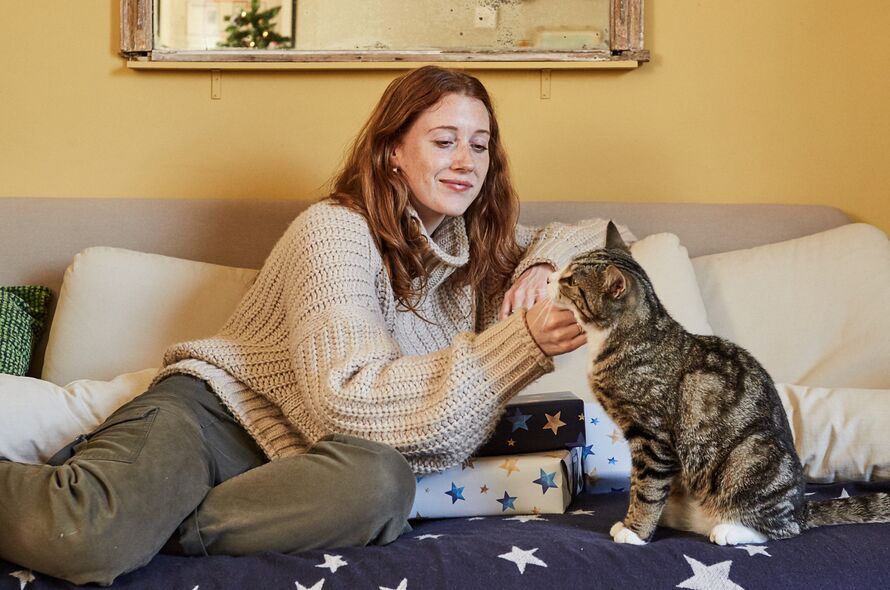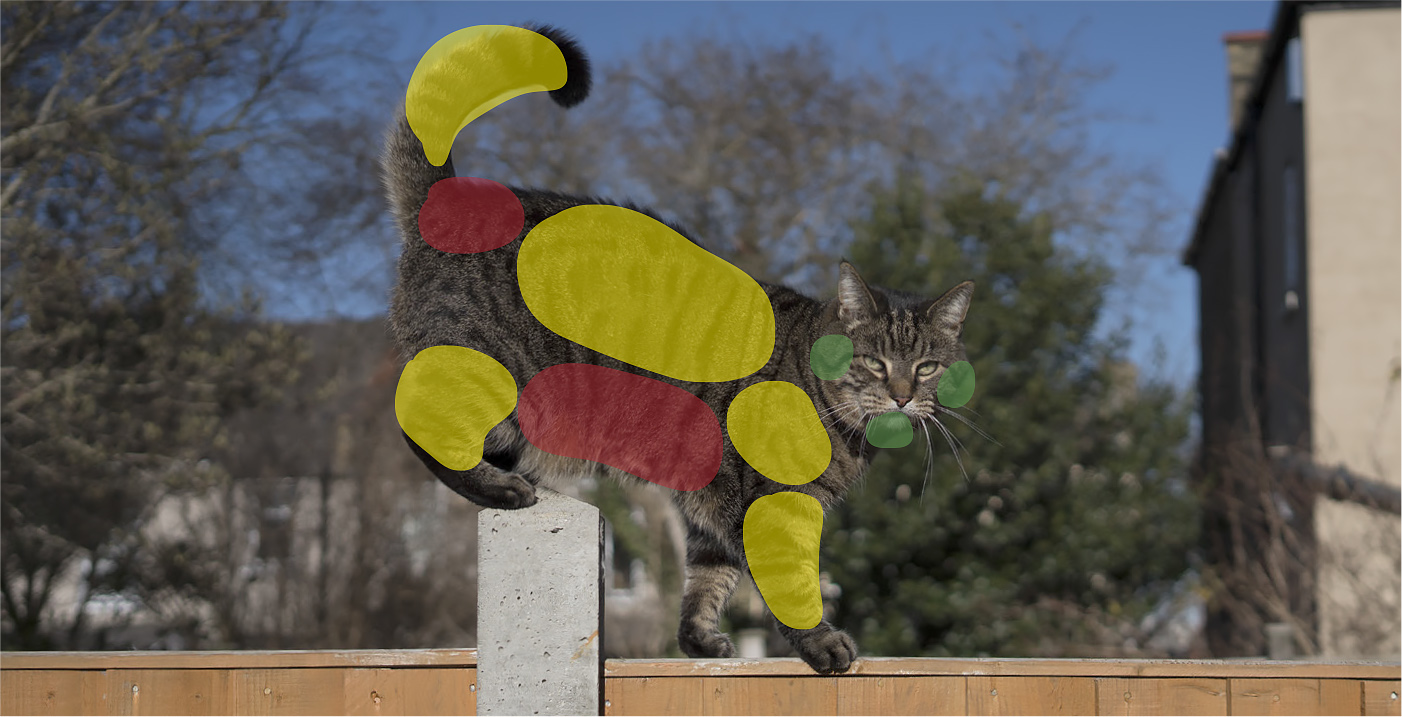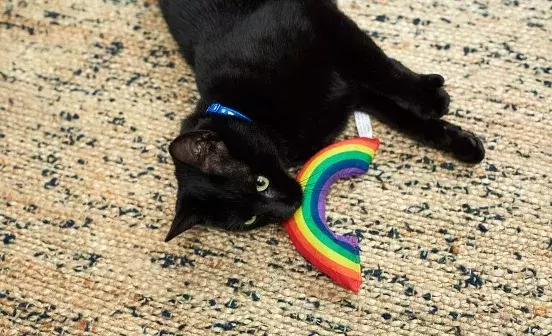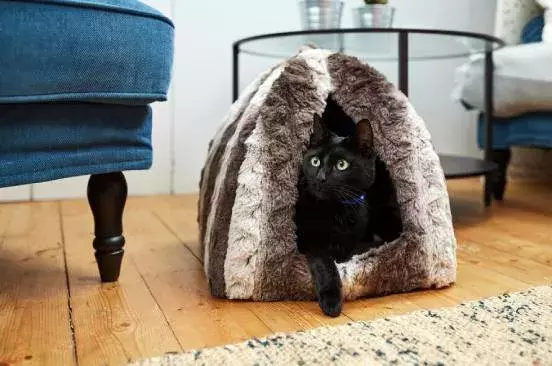Finding the best, or the right place to stroke a cat is very important. While there is no perfect spot to pet a cat, follow these rules to help you find the best place to pet any cat.

Some cats will love nothing more than to spend hours on your lap being stroked, whilst others may prefer only the briefest of chin tickles. Some cats may also enjoy your company and being near to you, but prefer to rest a slight distance away, rather than to be on your knee. What’s important is to figure out your cat’s preferences, and then respect them.
Lots of cats will enjoy interacting with people, but some may quickly become over stimulated during petting, or find some forms of touch unpleasant or overwhelming. This can lead to your cat merely tolerating rather than enjoying interactions with you, or in some cases, behaving aggressively (i.e. either growling, hissing, swiping or biting). These signals are essentially your cat asking you to stop, or at least change how you are interacting with them.
To understand how you can best interact with your cat, watch our video
What's the best way to stroke my cat and interact with them?
You can use the ‘C.A.T.’ acronym to help you to interact with your cat in a way that they will enjoy and feel comfortable with, as well as reduce the chances of being scratched or bitten during the process!
Choice
Did I give the cat a choice to tell me if they wanted to be touched or not?
Am I paying attention?
Am I looking out for any subtle signs to tell me if the cat is enjoying the interaction or might be a bit uncomfortable.
Touch
Where am I touching the cat? Does the cat want me to keep touching it here, or at all?
The key thing is to allow your cat to have more choice and feel more in control during interactions. This will not only work with cats that are more timid or wary of contact, but also with cats that enjoy lots of contact but that have a tendency to become over stimulated quickly and may have a tendency to bite or scratch.
C.A.T. explained
Did I give the cat a choice to tell me if they wanted to be touched or not?
- Who initiated the contact?
The cat should ideally always be the one who initiates contact. The best thing to do is to gently offer your hand to the cat and see if they choose to rub against it or not – always let the cat make the first move. If the cat doesn’t rub against you, they might not want to be touched right now. - Does the cat have sufficient choice to remove themselves from the interaction/get away if they want to?
Your cat should always be able to easily move away from you during interactions and should not be restrained or picked up; this can be stressful for them and might cause them to resort to aggression to try to free themselves. - If your cat is busy doing something else, like eating, sleeping or playing they are unlikely to appreciate being touched, or fussed. The same goes for if they’re hiding, or in one of their quiet places.
- If your cat appears scared, or in pain you should generally try and avoid touching them. If you urgently need to take them to the vet and aren’t able to lure them into their carrier with food, first make sure to protect yourself with long sleeves. Use a towel to pick them up as calmly and quickly as possible as they may understandably lash out.
Am I looking out for any subtle signs to tell me if the cat is comfortable or uncomfortable?
- It’s important to keep an eye out for signs that your cat is continuing to enjoy you stroking them. It’s also a good idea to know what to look for that if cat is getting frustrated, too stimulated, or just feeling uncomfortable.
- A happy cat will seem relaxed, with no tension in their body. They will also actively seek out the strokes and if you move away or stop, they will follow you. Have a look at our article on signs that your cat is happy for more information.
- An uncomfortable, or unhappy cat will be more tense, may physically move away from you, or suddenly groom themselves, start shaking their head, or rotating their ears and licking their nose. For more information about signs that your cat is unhappy, check out our article on cat body language.
Where am I touching the cat? Does the cat want me to keep touching them?
- Am I touching the cat in places cats generally like?
The following picture is a traffic light system of where cats generally like, and dislike, being petted.

Green - Cheeks, head and chin. Lots of friendly cats will enjoy being stroked here.
Amber - Upper body, front chest and tail. Some cats might like being stroked here, and others might not, depending on their individual preferences.
Red - Stomach, and base of tail. These areas are particularly sensitive so the majority of cats will not like being stroked here.
- Am I giving the cat opportunities to tell me if they still want to be stroked?
You can test this by following a simple 3 second rule:
If you pause after 3 seconds of stroking your cat, do they try to reinitiate contact (i.e. rub against you)? If not, your cat has probably had enough for now! They may just appreciate a little pause and will then tell you when they’re ready for more, or they may prefer to just sit quietly next to you or even have a play session instead.
As each cat is an individual, it’s important to spend some time working out what types of contact they prefer and when, as well as how long for, as this will all vary depending on the cat. These are just some of the different ways you can interact with your cat:
- Simply spending time near to your cat – your cat may simply like to lay by the fire when you are nearby reading a book, perch on the back of the sofa when you’re sitting there, or relax in a sunny spot in the garden whilst you’re out there gardening.
- Stroking your cat – When you are stroking a cat, consider the following:
- Intensity: how the cat likes to be stroked (i.e. gentle chin tickles or more vigorous, longer strokes).
- Frequency: how often they like being stroked. Some cats like a fuss every now and again, but not every time you see them.
- Duration: how long your cat likes being stroked each time. Some cats will sit and be stroked for hours whereas others prefer a quick fuss and then back to whatever they were doing.
- Playing with your cat, both indoors and outside.
- Carrying out some basic training with your cat.
- Grooming your cat – some, but not all cats will find this pleasurable.

